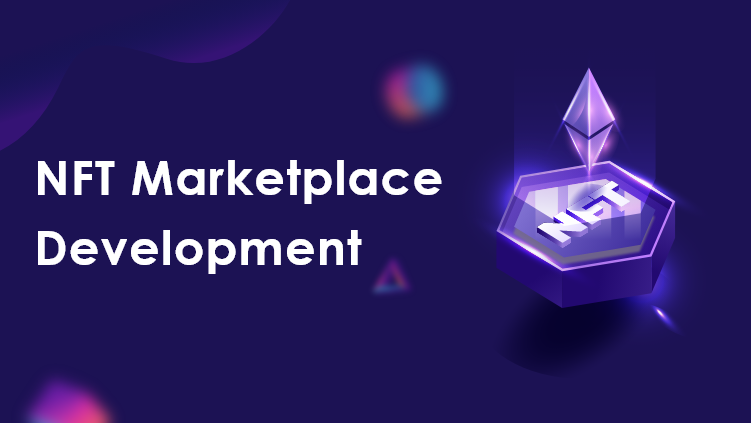In the rapidly evolving landscape of digital assets, a revolutionary force has emerged that is fundamentally reshaping the concept of ownership and value. Non-Fungible Tokens, a form of digital asset, have captured the attention and imagination of creators, collectors, and enthusiasts alike. These unique tokens are breathing new life into the virtual world, enabling the tokenization of a wide array of digital creations and artefacts. Beneath the surface of this transformative movement lies a complex and intricate ecosystem, where NFT marketplace development plays a pivotal role in orchestrating the convergence of technology, art, and innovation.
The Rise of NFTs: Redefining Digital Ownership
NFTs mark a watershed moment in the history of digital ownership. Unlike traditional cryptocurrencies, NFTs represent exclusive digital items that cannot be replicated or divided. Each NFT is one-of-a-kind, indivisible, and backed by blockchain technology, which ensures provenance, authenticity, and ownership transparency. This technology creates a digital certificate of ownership, granting creators the ability to tokenize their artistic endeavors and collectors the privilege of owning unique pieces of the digital world. From digital art and music to virtual real estate and collectibles, NFTs have shattered the boundaries of traditional ownership and ushered in a new era of digital value.
The Role of NFT Marketplaces: Nexus of Connectivity
The concept of NFTs might be mesmerizing, but it is within the NFT marketplaces that their true potential is unlocked. NFT marketplaces serve as bustling market squares, where creators mint and list their NFTs, and collectors peruse, bid, and purchase these exclusive digital artifacts. NFT marketplace development is the driving force that constructs the digital infrastructure underpinning this intricate exchange. These platforms bring creators and collectors together, creating a symbiotic relationship that transforms artistic visions into tangible digital assets cherished by a global audience.
The Building Blocks of NFT Marketplace Development
NFT marketplace development involves the orchestration of intricate technical mechanisms aimed at ensuring secure transactions, seamless user experiences, and universal accessibility. The linchpin of this development is the implementation of smart contracts, self-executing contracts with terms directly encoded into code. These smart contracts are the guardians of NFT ownership, meticulously recording the history and authenticity of each NFT on the blockchain. This immutable ledger ensures that the digital provenance of NFTs remains tamper-proof and traceable, guaranteeing trust in the authenticity of the digital artifact.
User-Centric Experiences: Weaving Intuitive Interfaces
The success of NFT marketplaces is contingent upon crafting user-centric interfaces that cater to creators and collectors alike. For creators, the process of minting NFTs should be an intuitive journey, guiding them through the steps of uploading their digital creations, defining attributes, and setting ownership details. On the flip side, collectors should navigate these marketplaces with seamless ease, enabling them to explore diverse categories, discover trending NFTs, and participate in auctions without friction.
Innovations Shaping NFT Marketplace Development
The horizon of NFT marketplace development is illuminated with innovation. Forward-looking developers are exploring the integration of virtual reality (VR), allowing collectors to immerse themselves in the digital realms of their NFTs. This integration bridges the gap between the virtual and physical worlds, enhancing the emotional connection between collectors and their digital treasures. Moreover, the exploration of cross-chain interoperability is gaining momentum, potentially enabling the seamless transfer of NFTs across different blockchain networks. This interconnectivity could expand the reach and accessibility of NFTs, creating a more vibrant and interconnected ecosystem.
Navigating Challenges and Embracing Opportunities
As NFT marketplace development marches forward, it encounters both challenges and opportunities. Scalability remains a concern as the popularity of NFTs grows, leading to congestion and high transaction fees on some blockchain networks. To address this, developers are exploring layer-2 scaling solutions that can accommodate higher volumes of transactions without sacrificing efficiency. Additionally, environmental concerns associated with energy-intensive blockchain networks have spurred interest in exploring eco-friendly alternatives that minimize the ecological footprint of NFT transactions.
The Future of NFT Marketplace Development
The path ahead for NFT marketplace development is one of boundless potential. As blockchain technology matures and garners broader adoption, NFT marketplaces will likely become more sophisticated and customizable. Advanced features, seamless integration with emerging technologies, and innovative ways for creators and collectors to interact will emerge. Beyond art and collectibles, NFT marketplaces could potentially extend their influence to domains such as virtual experiences, intellectual property rights management, and beyond.
Conclusion
NFT marketplace development stands as the linchpin of the NFT revolution, ushering in a new era of digital ownership and expression. As NFTs continue to captivate audiences worldwide, these marketplaces serve as the conduits through which digital assets transform into cherished and tangible tokens of creativity. NFT marketplace development is a testament to the power of technology to bridge the gap between art and innovation, shaping the trajectory of digital ownership for generations to come.





Comments